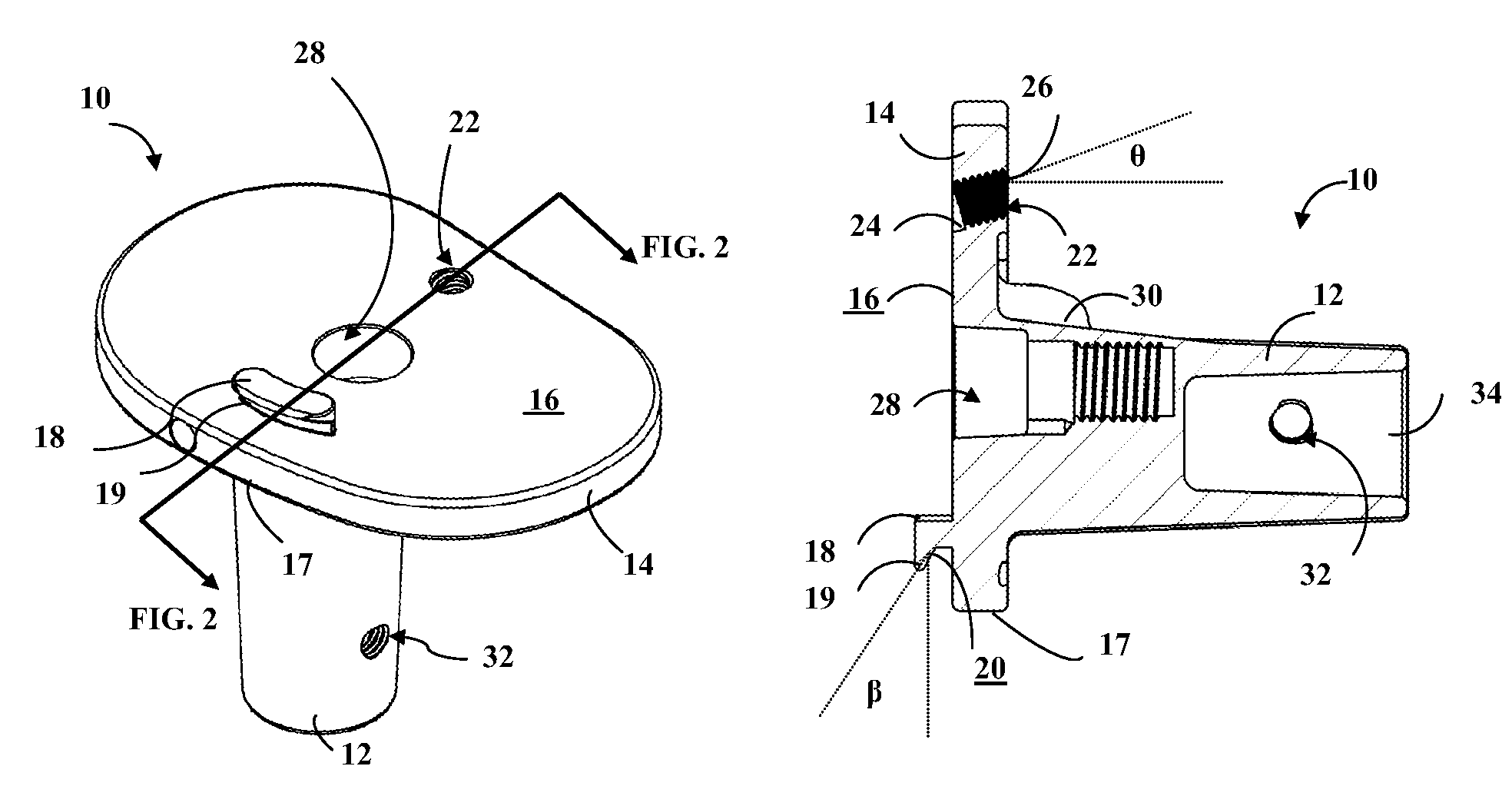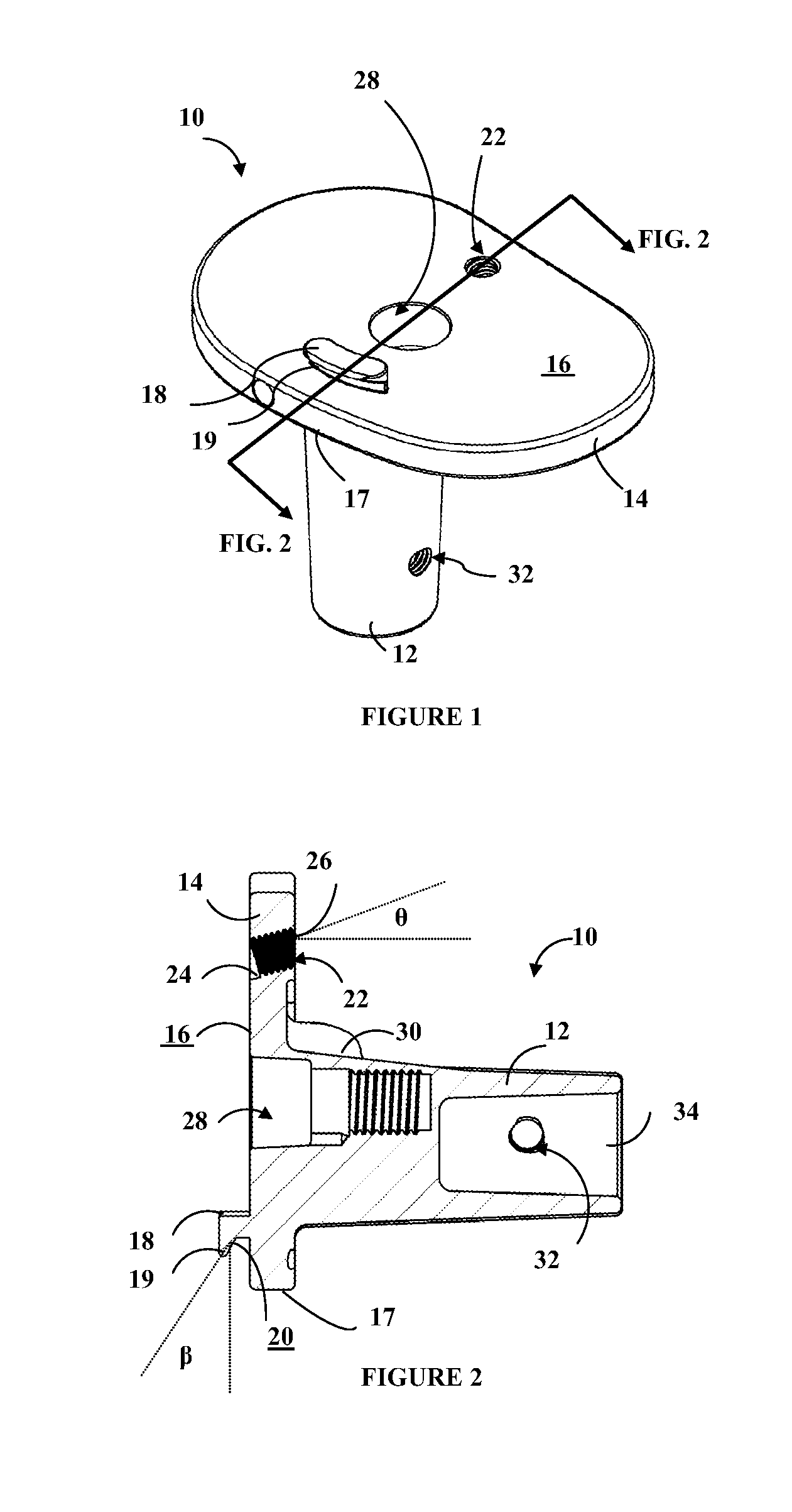Orthopaedic implant system and fasteners for use therein
a technology which is applied in the field of orthopaedic implants and fasteners for use therein, can solve the problems of pain in the patient, prior systems of coupling components have several problems, and the components of knee implants are subject to large loads, so as to prevent spin out, improve the effect of structure and prevent the patient from falling ou
- Summary
- Abstract
- Description
- Claims
- Application Information
AI Technical Summary
Benefits of technology
Problems solved by technology
Method used
Image
Examples
Embodiment Construction
[0064]FIGS. 1-23 illustrate structures and mechanisms for coupling tibial inserts and tibial components together. Although the orthopaedic implants shown and described herein are for knee joints, the same concepts could potentially be applied to implants for other joints or orthopaedic implants. FIGS. 3-16 illustrate embodiments of implants that include fixed tibial inserts 40 or other types of fixed constructs, whereas FIGS. 17-23 illustrate embodiments that include rotatable tibial inserts 90. In the embodiments shown, the same tibial component 10 may be used, thus providing for interchangability between tibial inserts 40, 90.
[0065]FIGS. 1-2 show a tibial component 10 including a stem portion 12 and a tibial tray 14. The stem portion 12 may be dimensioned to couple with structure (not shown) that is inserted into a patient's intramedullary canal (and itself may be inserted into the intramedullary canal). Thus, for example, the stem portion 12 may include at least one opening 32 an...
PUM
 Login to View More
Login to View More Abstract
Description
Claims
Application Information
 Login to View More
Login to View More - R&D
- Intellectual Property
- Life Sciences
- Materials
- Tech Scout
- Unparalleled Data Quality
- Higher Quality Content
- 60% Fewer Hallucinations
Browse by: Latest US Patents, China's latest patents, Technical Efficacy Thesaurus, Application Domain, Technology Topic, Popular Technical Reports.
© 2025 PatSnap. All rights reserved.Legal|Privacy policy|Modern Slavery Act Transparency Statement|Sitemap|About US| Contact US: help@patsnap.com



